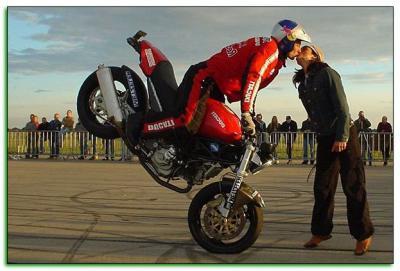The braking distance is the distance that the vehicle will move in the direction of its initial movement from the start of the braking system to a complete stop. It is important here not to confuse this concept with the concept of a stopover. The stopping distance is the distance that the vehicle will travel from the moment the driver realizes the need for braking until the vehicle stops moving. That is, to the first definition we add the time taken by the driver to react, and the time the brake system is turned on, and we get the second. Both of these concepts are inextricably linked to any land vehicle that has a braking mechanism.
The braking distance depends on a large number of factors. For example, for a car, these factors will be as follows:
parameters of the road surface (primer, asphalt, concrete);
the quality and degree of wear of the tread (summer tires in winter will extend the path to the nearest obstacle, and winter tires in the summer will lead to aquaplaning in the pool too);
weather conditions (dry, rain, snow);
the condition of the brakes themselves (are the pads good, are the hydraulics leaking, etc.);
the presence or absence of an anti - lock system (ABS prevents the wheel from locking and, when braking, makes more efficient use of the friction force and maintain control over the control);
car load (the heavier the transport, the greater the inertia it has);
initial speed (the most important factor, the length of the braking distance directly depends on the square of the speed of the car).
As is clear from the above, the braking path - the value is inconstant, an empirical and theoretical approach can determine it very inaccurately. Usually, along the length of the path, the initial speed of the vehicle is calculated during an accident. For the driver, on the contrary, it is important to know how much his car will slow down at that speed.

The braking distance of a motorcycle is usually greater than that of a car, because, firstly, it has two wheels less, that is, the contact patch of the wheels with the road is small, and secondly, there are two brakes, front and rear. Moreover, both have their own specifics of application and you can’t just “brake to the floor”. When making emergency braking it is much more difficult to control a motorcycle than a car, and most of the driver’s reflexes will be occupied with the question: “How not to kill yourself?”, But not “How would you stop faster?”. This does not mean that the motorcyclist will definitely push the pedestrian, in most cases he will simply go round him.
The braking distance of a train is a separate issue altogether.
All rail vehicles can move either forward or backward, so there will be no drifts or upheavals. The driver does not need to control the direction of movement, only the operation of the braking system. At the same time, the
coefficient of friction here is low, the mass is large and the distance that the rail train will go to a complete stop is often more than one kilometer. Very often, underestimation of this feature of trains leads to tragedy.
It is important to remember that the driver of any vehicle must choose a safe speed. It is better to clearly understand what the braking distance will be than to watch later how it is measured.